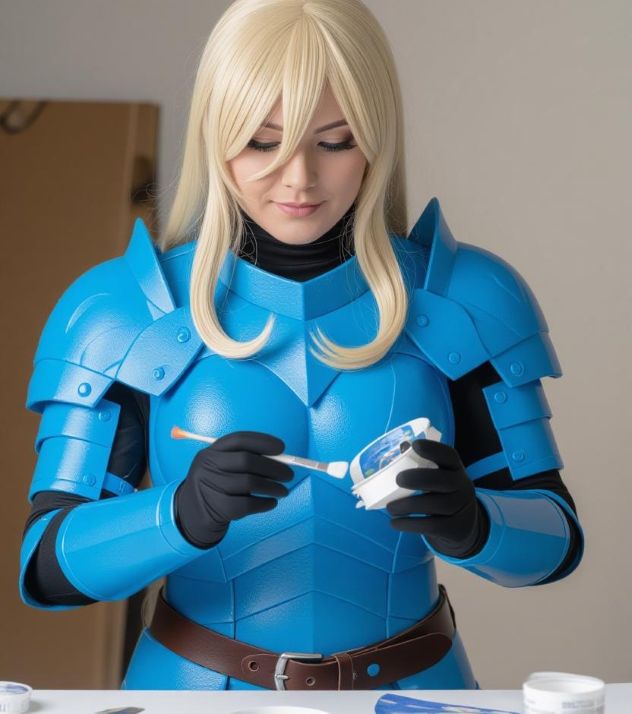Safety First: Quality Standards in Cosplay Materials and Convention Wear

Every great costume starts with creativity, but safety is what keeps the experience enjoyable. From contact allergies to heat exhaustion, many cosplayers discover that unsafe materials or poor design choices can quickly turn a fun event into a stressful one. Yet, the best cosplays are those that look incredible while keeping the wearer safe and comfortable. Understanding costume safety standards isn’t just about compliance—it’s about care, creativity, and community well-being.
Cosplay has evolved from small fan gatherings to large-scale global events where craftsmanship and accuracy are celebrated. As hot cosplay culture gains popularity, the demand for elaborate costumes has skyrocketed. However, more complexity also means greater risk if safety isn’t prioritized. Using flame-resistant fabrics, non-toxic adhesives, and well-balanced props can make the difference between a great convention day and a trip to the first-aid booth.
Why Safety Should Be a Cosplayer’s Priority
Every material used in a costume has an impact on your comfort and health. Paints, glues, fabrics, and plastics can emit fumes or cause irritation when applied incorrectly. Even something as simple as poorly ventilated EVA foam armor can trap heat, leading to dehydration or dizziness. Choosing the right materials is the first step toward a safer, more enjoyable experience.
Event organizers and convention centers also have safety rules to protect everyone. Props are inspected, and certain weapons or sharp edges are banned. Many conventions now require prop peace-bonding—a tag showing that a replica weapon is harmless. It’s an important reminder that cosplay safety extends beyond the individual; it ensures everyone at the event feels secure. You can think of it as applying the same careful oversight found in quality control and the tasks of quality management—both prioritize consistency, safety, and high standards for better outcomes.
Non-Toxic Paints and Glues: The Foundation of Safe Crafting
One of the biggest hidden dangers in costume creation lies in chemical exposure. Spray paints, sealants, and adhesives often contain solvents that release toxic fumes. Always check labels for “non-toxic” or “low-VOC” (volatile organic compounds) certifications. Work in well-ventilated spaces or wear respirators designed for hobby work.
Water-based acrylics are a safer choice for painting foam or fabric, while PVA glue and hot glue are preferred over strong industrial adhesives. If you’re sealing foam armor, Mod Podge or Plasti Dip (used outdoors) can provide a safe, professional finish. The key is reading the product data sheet—most safe brands list their ingredients openly.
Flame-Resistant and Breathable Fabrics
Fabric selection can mean the difference between comfort and catastrophe. Synthetic materials like polyester or nylon can ignite easily and melt when exposed to heat. Always treat fabrics with a flame retardant spray or opt for naturally flame-resistant materials like wool, cotton blends, or treated rayon.
Breathability is another essential factor. Cosplayers often spend hours under bright convention lights, and overheating is common. Choose lightweight, moisture-wicking fabrics whenever possible. Adding hidden vents or mesh panels can also keep your body cool without compromising the costume’s look.
Prop Safety and Convention Regulations
Props bring characters to life, but they also introduce potential hazards. Many conventions have strict size and material limits. Sharp edges, metal blades, or hard plastic replicas can be flagged or confiscated. Always check the event’s prop policy before attending.
When building large props, use lightweight foam or PVC rather than wood or metal. Balance is crucial—props that are too heavy can strain the arms or back. Secure all moving parts, and avoid live electricity unless certified and inspected. Remember, safety inspections are part of the fun, not an obstacle. They ensure that everyone can enjoy a safe and respectful environment.
Your Cosplay Safety Checklist
Before stepping onto the convention floor, run through this quick checklist:
- ✔ Use non-toxic paints and glues.
- ✔ Treat or use flame-resistant fabrics.
- ✔ Make sure your prop materials are light, safe, and compliant with event policies.
- ✔ Test for comfort, mobility, and ventilation before wearing the full costume.
- ✔ Bring repair supplies for quick, safe fixes.
- ✔ Hydrate often and take cooling breaks during long events.
Community Standards and Shared Responsibility
Safety culture grows stronger when cosplayers look out for one another. Share product safety tips, report unsafe setups, and help newcomers learn how to build responsibly. Many local cosplay groups and makerspaces now offer workshops focusing on safe crafting methods. This collective knowledge helps maintain high standards across the community.
Building a Safer Future for Cosplay
Great cosplay isn’t just about accuracy, it’s about responsibility. As fans push boundaries of design and realism, the community must continue to value safety just as much as style. That means checking material data sheets, following event rules, and promoting safer practices across all platforms. The joy of hot cosplay should never come at the expense of health or comfort. When creativity and care go hand in hand, every convention becomes a celebration of both art and awareness. After all, the best costume is one that looks amazing and feels safe to wear.